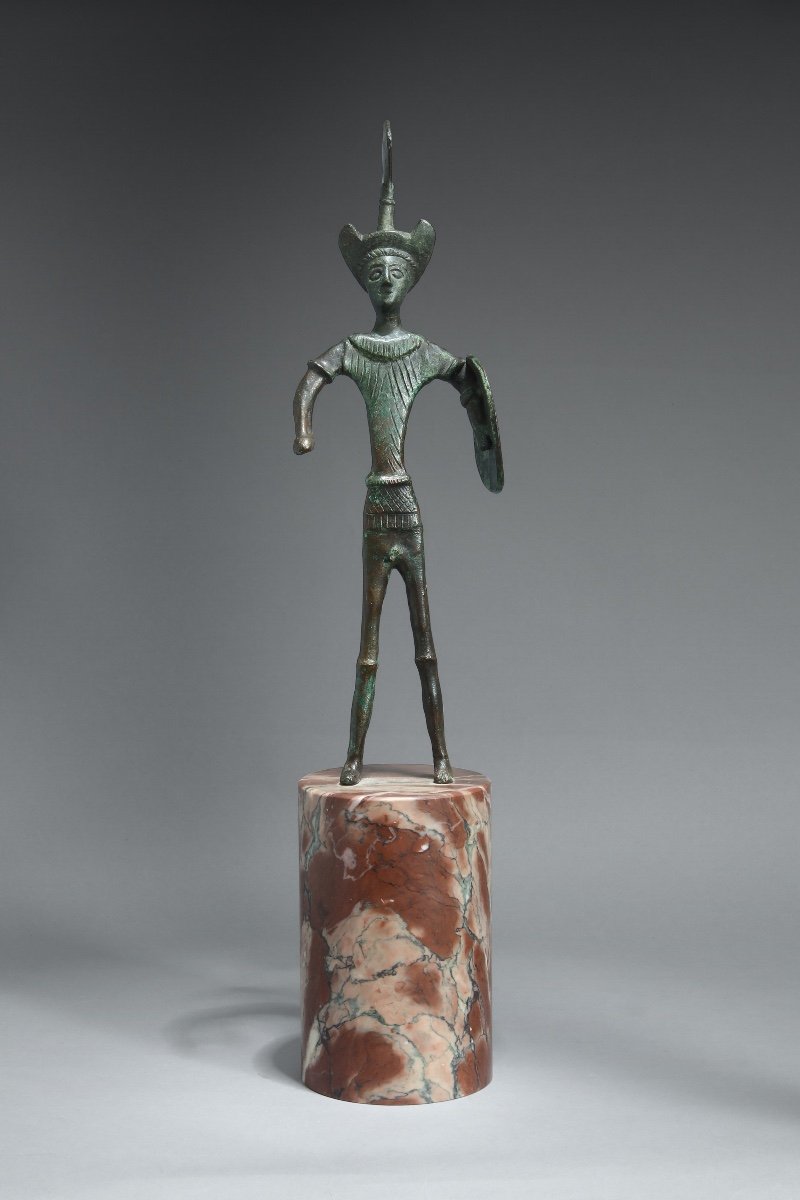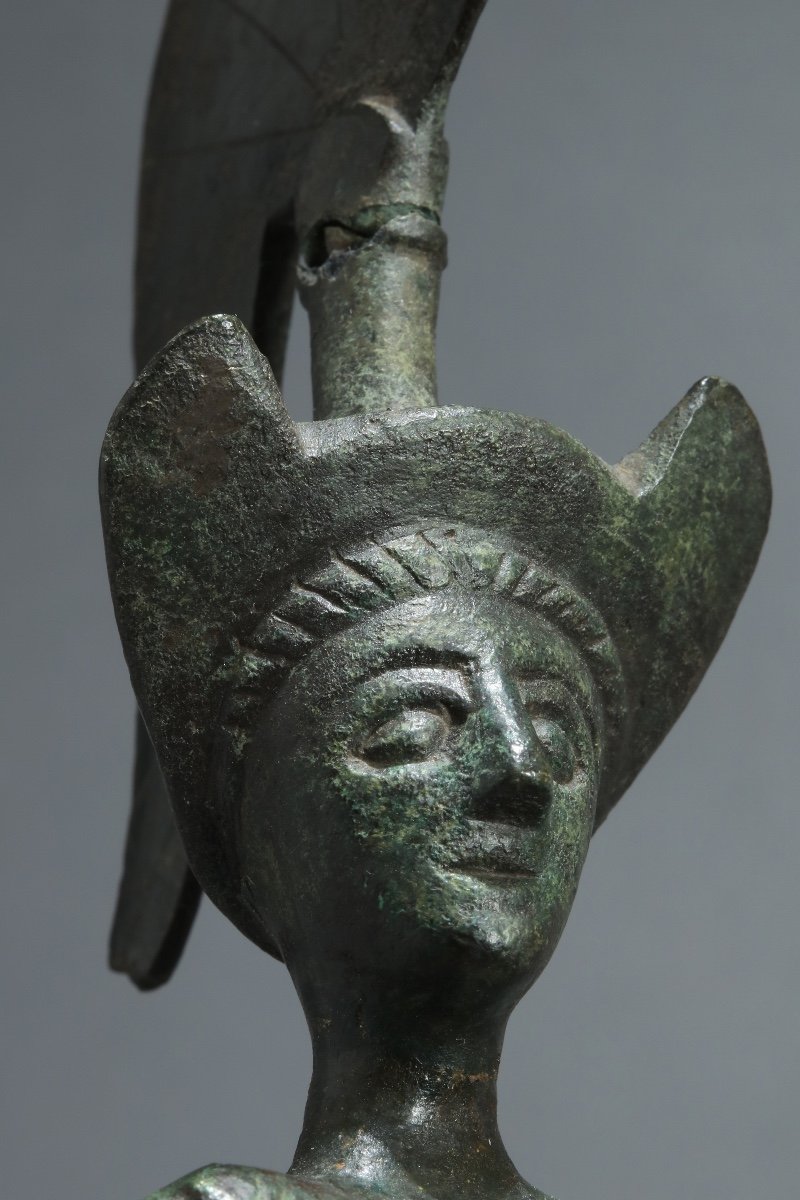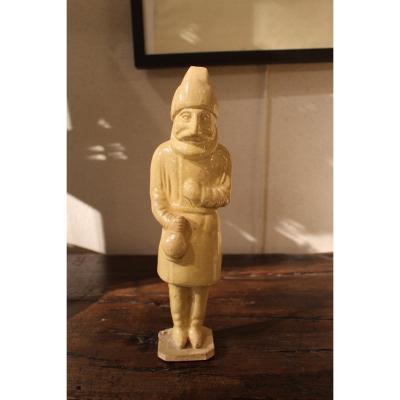Etruria, 5th BC for the head, 19th c. for the rest of the body
H. of the bronze: 26 cm
Total H. with base: 38.5 cm
Restoration between the head and the crest, and between the head and the rest of the body.
Since the Renaissance, the Etruscans haunted the imagination of artists and scholars. In the 18th century, all the cities of Tuscany, Florence, Cortona, Volterra were in the grip of Etruscomania. (...) at the beginning of the 19th century, ( …) there was a broadening of historical perspectives together with a series of archaeological discoveries which made it possible to begin to pose Etruscan problems in new terms.”
1973, Jacques Heurgon, The discovery of the Etruscans at the beginning of the 19th century
In the case of our statuette, only the head and the crest of the characters are from the Etruscan period. They are the fragments of a statuette of a hoplite warrior from the 5th century BC. Given the importance of these ancient fragments, a 19th century collector thought it useful to have the body reconstituted by a patinated bronze cast. the ancient. This approach testifies to the deference of the collector with regard to these vestiges. The statuette is installed on a high cylindrical plinth in veined red marble.



























 Le Magazine de PROANTIC
Le Magazine de PROANTIC TRÉSORS Magazine
TRÉSORS Magazine Rivista Artiquariato
Rivista Artiquariato
